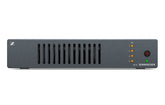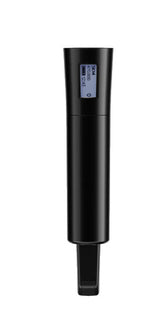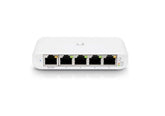5 Networking Security Mistakes That Could Cost You Thousands
Introduction: Are You Leaving the Back Door Open?
According to IBM, the average cost of a data breach in 2023 was $4.45 million. And while that number includes global enterprise figures, even small to mid-sized businesses face cybersecurity incidents that can cost tens of thousands of dollars in damages, downtime, and lost trust.
In the AV, networking, and surveillance industries, connected infrastructure is both a necessity and a liability. A single unpatched router, misconfigured firewall, or weak password can serve as the entry point for ransomware, DDoS attacks, or data theft.
This guide explores the five most common networking security mistakes businesses make and how to fix them before they cost you a fortune.
What Are Networking Security Mistakes?
Networking security mistakes are errors or oversights in the setup, configuration, or maintenance of your network infrastructure that leave it vulnerable to attack. These include anything from outdated software and weak credentials to failing to segment networks or monitor for threats.
In today’s connected environment, network security is no longer just an IT concern—it’s a foundational business risk that touches everything from cloud services and surveillance systems to AV integrations and remote work.
Mistake #1: Weak or Default Passwords
The Problem:
Too many organizations still use default login credentials or weak passwords like "admin123" on routers, firewalls, switches, and IP cameras.
The Cost:
Once a hacker finds your IP address or network access point, brute-force or credential-stuffing attacks can give them full control of your infrastructure.
Real-World Example:
A small office using default admin credentials on its networked security system was breached, allowing attackers to access surveillance footage and disable alert systems.
Fix It:
-
Require strong passwords with uppercase, lowercase, numbers, and symbols
-
Enforce routine password changes
-
Use a password manager for complex credentials
-
Enable two-factor authentication (2FA) wherever available
Mistake #2: Failing to Patch and Update Network Devices
The Problem:
Routers, switches, firewalls, and access points often run firmware that is rarely updated—if ever. These devices become easy targets for known exploits.
The Cost:
Unpatched vulnerabilities are among the most exploited by hackers, especially in ransomware and lateral movement attacks.
Real-World Example:
In 2021, thousands of businesses were affected by a vulnerability in a major firewall brand that had issued a patch months prior.
Fix It:
-
Schedule regular firmware updates for all networking devices
-
Monitor manufacturer bulletins for CVEs (Common Vulnerabilities and Exposures)
-
Replace legacy gear that is no longer supported with modern, secure devices
Mistake #3: No Network Segmentation
The Problem:
Putting all devices—security cameras, laptops, guest Wi-Fi, printers, servers—on a single network increases the attack surface.
The Cost:
If one device is compromised, attackers can easily move laterally across the network to access sensitive data or deploy malware.
Real-World Example:
A retail store’s guest Wi-Fi was used to access their point-of-sale system due to lack of segmentation.
Fix It:
-
Create VLANs (Virtual Local Area Networks) to isolate systems
-
Keep AV and surveillance equipment on a separate subnet
-
Use firewalls or routers that support VLAN tagging and traffic filtering
-
Limit communication between segments unless explicitly required
Mistake #4: Insecure Remote Access
The Problem:
Businesses often use port forwarding or insecure remote desktop protocols (RDP) without encryption for remote management.
The Cost:
Exposed RDP ports and weak VPNs are top attack vectors for ransomware.
Real-World Example:
A company’s surveillance system was accessed through an open port and used to launch a botnet attack.
Fix It:
-
Use secure VPNs with strong encryption and 2FA
-
Avoid open ports and never expose RDP or camera feeds directly to the internet
-
Deploy zero-trust network access (ZTNA) or SD-WAN for secure, authenticated access
-
Monitor remote access logs and unusual login patterns
Mistake #5: No Active Monitoring or Threat Detection
The Problem:
Many businesses adopt a "set it and forget it" mindset when it comes to networking and AV systems. Without monitoring, threats go unnoticed until damage is done.
The Cost:
Undetected breaches can persist for months, leading to stolen data, unauthorized surveillance, and compliance violations.
Real-World Example:
A medical office failed to notice unauthorized access to their VoIP system until over $20,000 in fraudulent calls were made.
Fix It:
-
Use network monitoring software or managed detection and response (MDR) services
-
Set up alerts for unusual traffic, failed logins, or data exfiltration
-
Implement SIEM (Security Information and Event Management) solutions if managing multiple sites
Benefits of Proactive Network Security
Reduced Risk of Breach
Addressing these five issues alone can drastically lower your exposure to both automated and targeted attacks.
Better System Performance
Securing your network reduces unnecessary traffic, malware infections, and data loss.
Compliance and Peace of Mind
Meet industry standards like PCI, HIPAA, or SOC 2 with fewer audit headaches.
Enhanced Customer Trust
Clients are more likely to do business with vendors who take cybersecurity seriously.
How to Implement Secure Networking Practices
Step 1: Perform a Network Security Audit
Identify devices, current configurations, and vulnerabilities.
Step 2: Replace Outdated or Unsupported Hardware
Legacy gear without modern encryption or firmware support is a liability.
Step 3: Train Staff
Ensure that everyone with network access understands phishing, credential hygiene, and usage policies.
Step 4: Document Your Network
Keep updated records of VLANs, firewall rules, device credentials, and patch history.
Step 5: Use Business-Grade Networking Products
Consumer-grade routers and unmanaged switches lack the controls needed for secure operations.
Explore secure networking and connectivity tools designed for business-critical AV and surveillance setups.
FAQs
How often should I change my network passwords?
Every 60–90 days, or immediately if there is a breach or employee change.
Is VLAN setup complicated?
Not with the right equipment. Many business-grade routers and managed switches offer intuitive VLAN configuration tools.
Can I secure my network without a full IT team?
Yes. Use managed security services, user-friendly firewalls, and automated patching tools to stay protected with minimal resources.
Conclusion: Stop Small Mistakes From Becoming Big Expenses
The most costly breaches usually start with simple, overlooked mistakes. Whether it’s a weak password, an outdated router, or unmonitored guest Wi-Fi, these vulnerabilities can be easily exploited.
By understanding and addressing the five most common networking security mistakes, businesses can prevent downtime, data loss, and financial hits—all while improving performance and customer confidence.
Ready to secure your network?
Browse our selection of enterprise-grade networking products, AV systems, and IP surveillance solutions at SportsGeekUSA.











